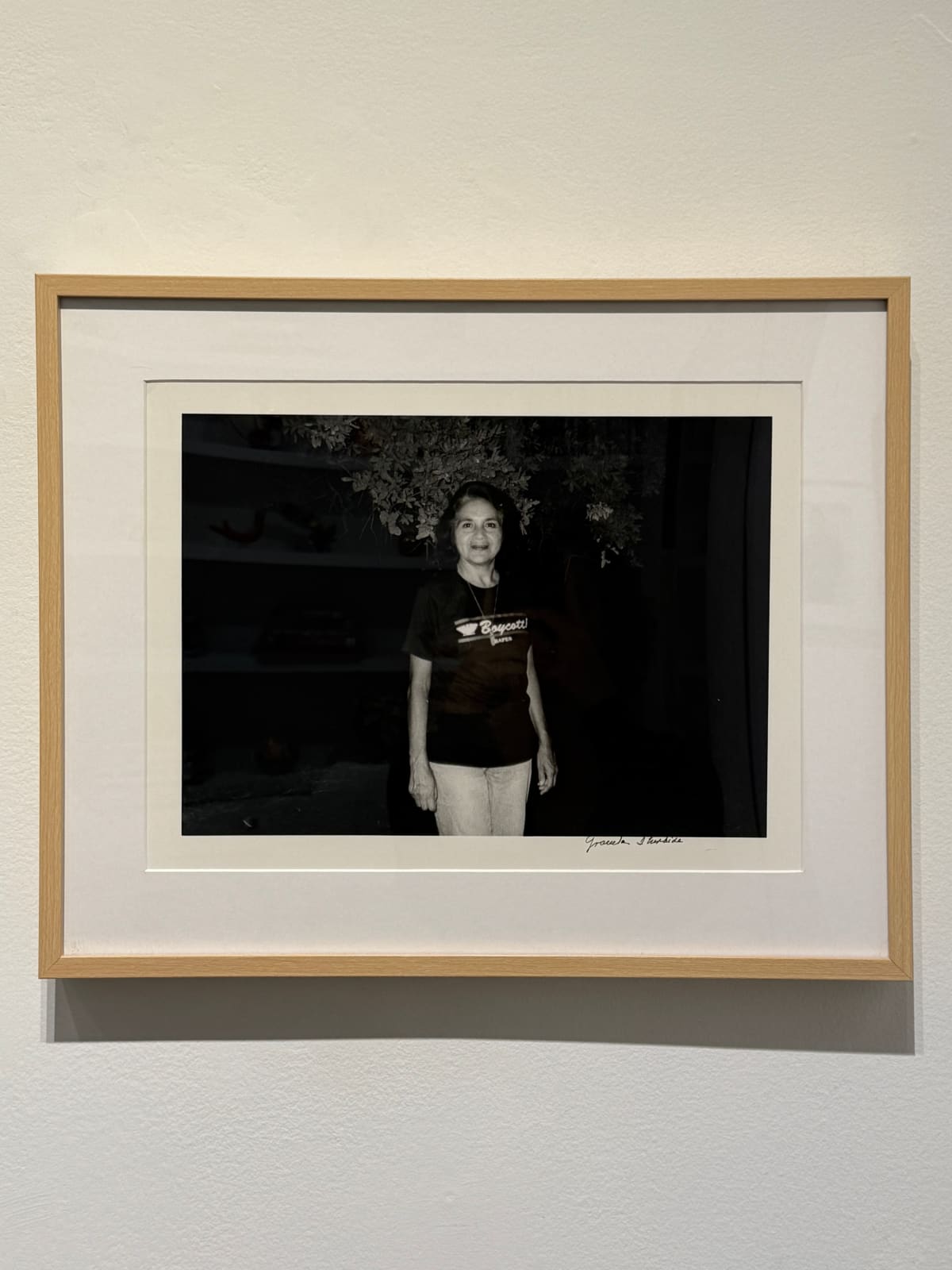



Graciela Iturbide Mexican, b. 1942
Dolores Huerta, Kern County, California, 1991
Silver Gelatin Print
11 x 14 in
27.9 x 35.6 cm
27.9 x 35.6 cm
Further images
During one of her trips to California, Chicana artist Ester Hernández introduced Iturbide to the renowned farmworkers’ leaders and civil rights advocates César Chávez and Dolores Huerta, founders of the...
During one of her trips to California, Chicana artist Ester Hernández introduced Iturbide to the renowned farmworkers’ leaders and civil rights advocates César Chávez and Dolores Huerta, founders of the United Farm Workers (UFW). Huerta played a crucial role in organizing farmworkers and shaping the Chicano movement’s ideas of justice and dignity. Iturbide’s portraits reflect the broader collective spirit that defined the Chicano struggle—a movement through which Mexican Americans reclaimed their history, culture, and identity. Figures like Huerta, Chávez, and local leaders in San Francisco’s Mission District embodied this change. The once-pejorative term “Chicano” became a symbol of cultural pride and resistance, celebrated through art, music, and activism. Alfonso Morales Carrillo, “White Fence Revisited,” in Graciela Iturbide: White Fence, ed. Graciela Iturbide (Barcelona: RM, 2024), p. 12.




